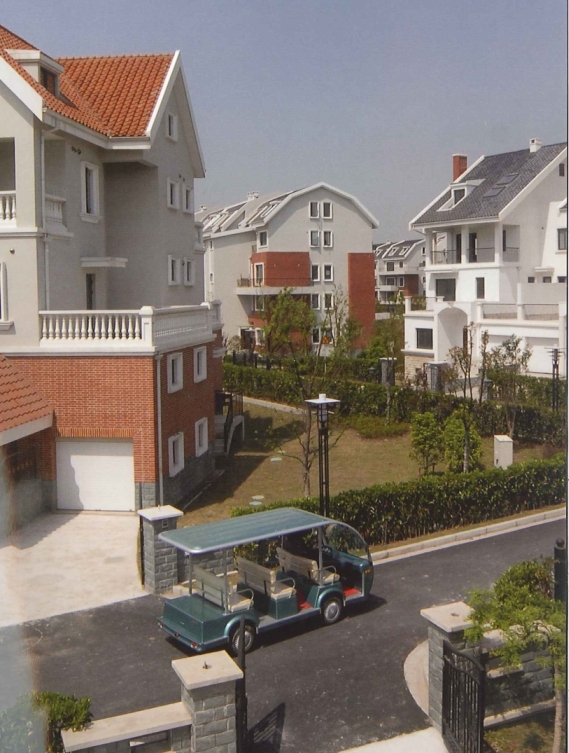
Scandinavian styled
luxurious villas
source: Chen Taiming; Den Hartog,
Harry: Shanghai New Towns
- Searching for community
and identity in a
sprawling metropolis. 010
Publishers, Rotterdam
2010, 416 p. ISBN
978-90-6450-735-9
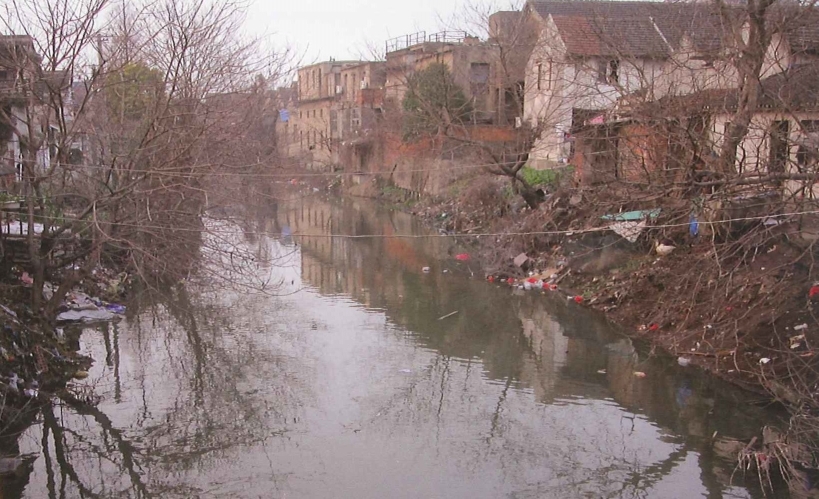
A polluted canal in old
town
source: Den Hartog, Harry:
Shanghai New Towns -
Searching for community
and identity in a
sprawling metropolis. 010
Publishers, Rotterdam
2010, 416 p. ISBN
978-90-6450-735-9
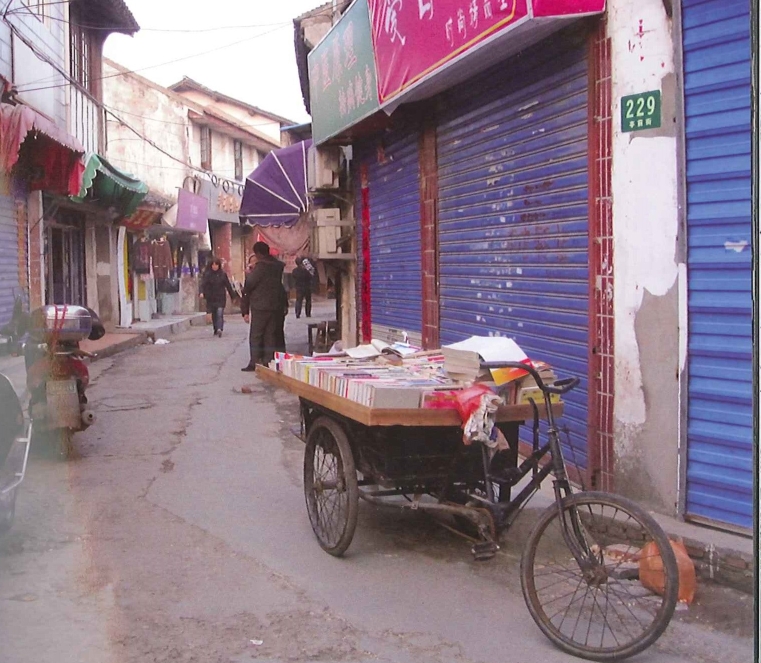
Street in Luodian old
town
source: Den Hartog, Harry:
Shanghai New Towns -
Searching for community
and identity in a
sprawling metropolis. 010
Publishers, Rotterdam
2010, 416 p. ISBN
978-90-6450-735-9
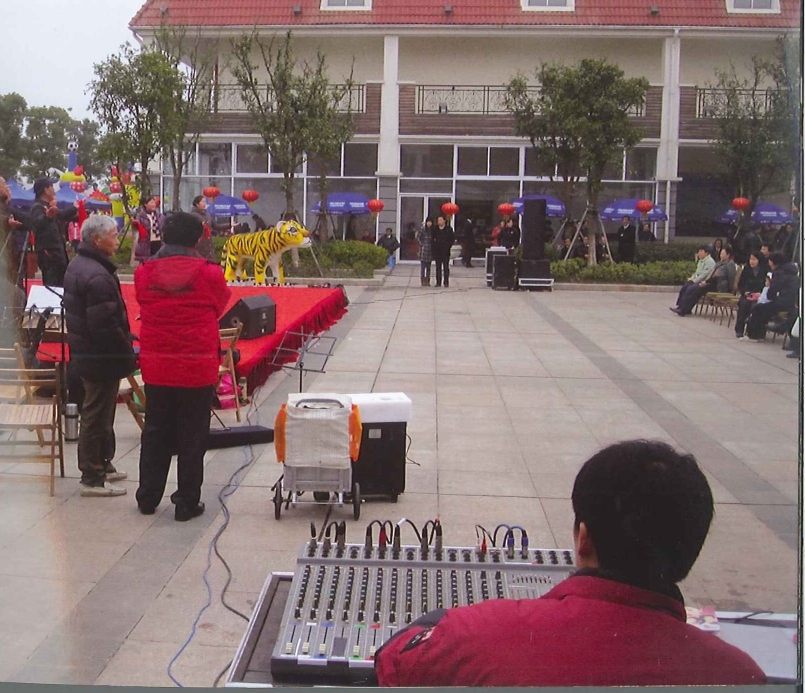
The developer of Luodian
organise activities to
attract shoppers
source: Den Hartog, Harry:
Shanghai New Towns -
Searching for community
and identity in a
sprawling metropolis. 010
Publishers, Rotterdam
2010, 416 p. ISBN
978-90-6450-735-9
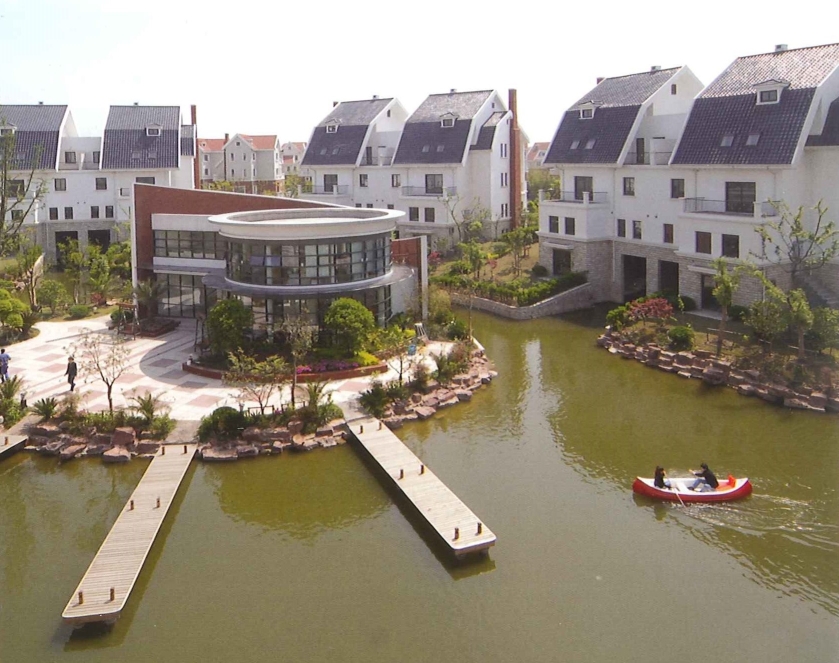
Scandinavian styled
environment
source: Chen Taiming; Den Hartog,
Harry: Shanghai New Towns
- Searching for community
and identity in a
sprawling metropolis. 010
Publishers, Rotterdam
2010, 416 p. ISBN
978-90-6450-735-9
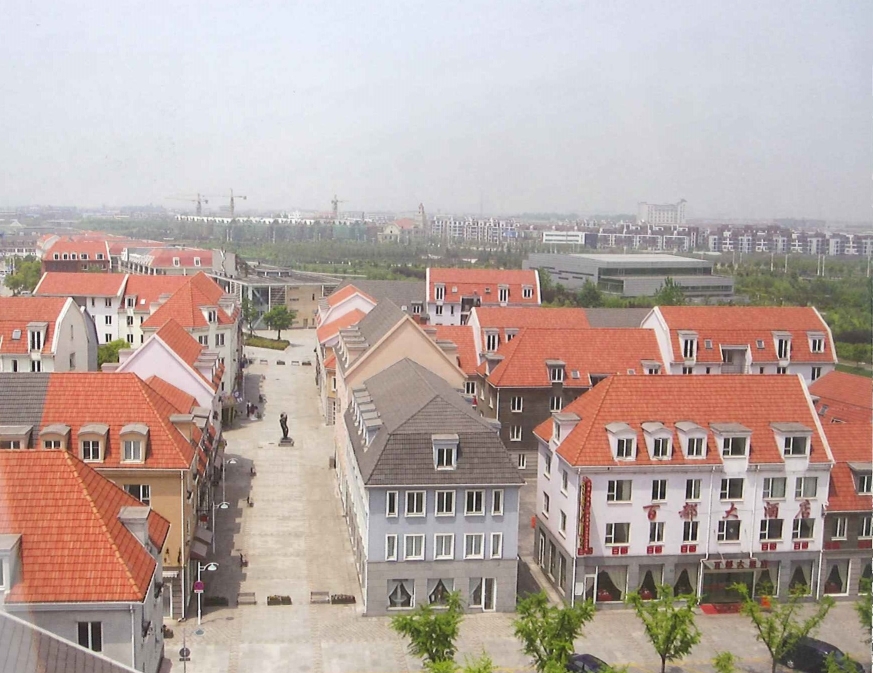
New centre with retail
and community facilities
source: Den Hartog, Harry:
Shanghai New Towns -
Searching for community
and identity in a
sprawling metropolis. 010
Publishers, Rotterdam
2010, 416 p. ISBN
978-90-6450-735-9
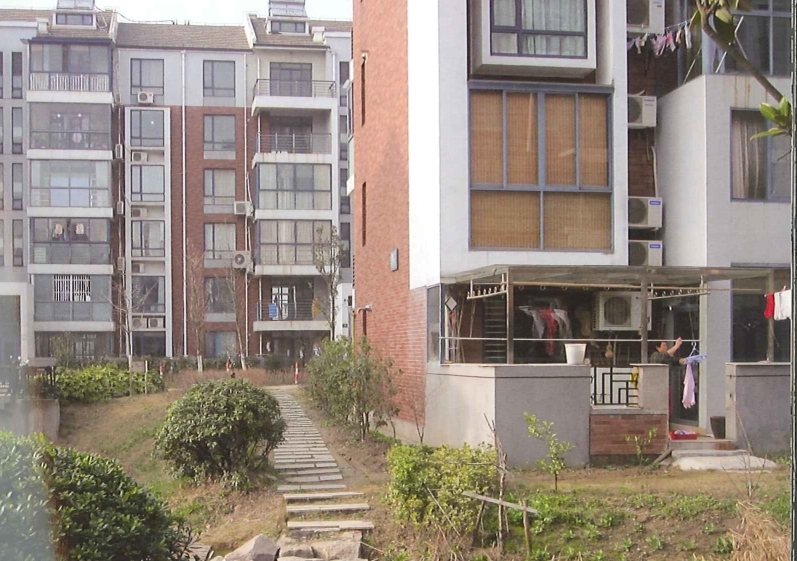
European-style housing
for the upper middle
class
source: Den Hartog, Harry:
Shanghai New Towns -
Searching for community
and identity in a
sprawling metropolis. 010
Publishers, Rotterdam
2010, 416 p. ISBN
978-90-6450-735-9
|
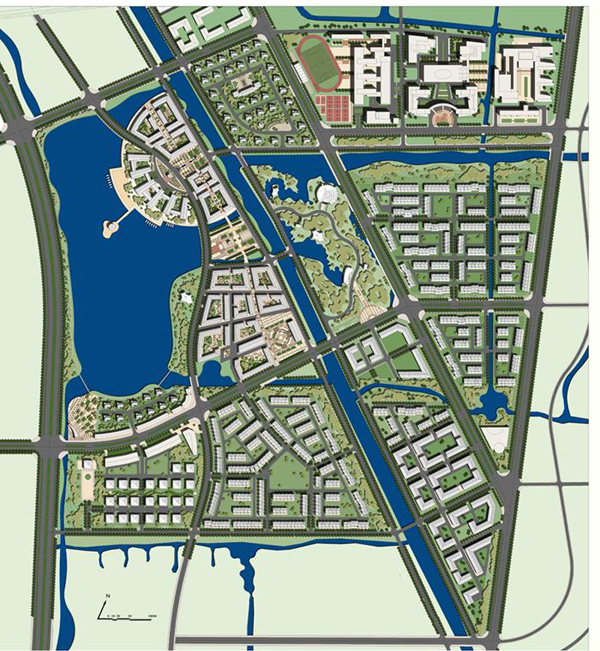
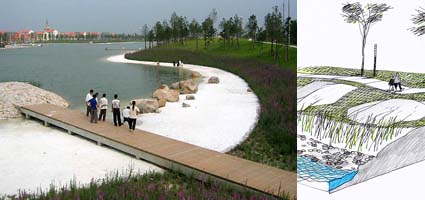
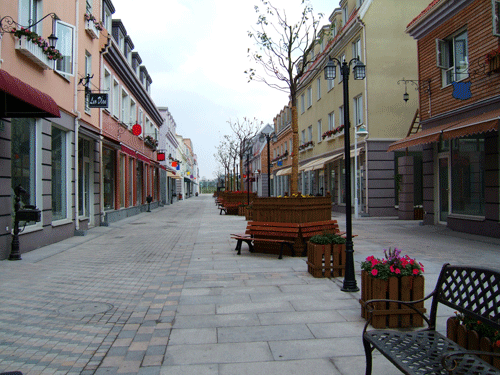
Luodian New Town, besides Luodian Industrial Zone, is a part of a modern development of the ancient town Luodian in Baoshan District, 25 kilometres far from Shanghai.
The first settlement of Old Luodian, known as Golden Luodan, dates back to over 700 years ago, during the reign of the Yuan Dynasty. The agnomen ‘Golden’ gained recognition because of its strategic location and availability of the water transportation securing rapid development and good economic position. In addition to the water accessibility, today the city is proud of the nearly finished highway and the suburban ring road.
Master plan
As the town belongs to the development strategy of ‘One city, Nine Towns’, it was tagged by a Nordic theme from Sweden. Furthermore, within the 1-9-6-6 strategy (vision for the urban structure - namely 1 central city, 9 new cities, 60 new towns, and 600 central villages) Luodian New Town is planned to reach a degree of a self-sufficient town.
The design of the project was divided into three phases – an international competition; general structure plan and manual with design grammar; and a detailed design of the urban centre and lake area. The best proposal was a mix of modern and traditional Swedish styles. They varied from traditional small town influences to modern neighbourhoods and suburbs with villas. The Swedish firm Sweco Architects AB, who was also commissioned to lead the project, presented the proposal.
The Swedish firm is mainly interested in sustainable urbanisation and sustainable cities. Their concept is based on the use of renewable resources, the minimisation of resource consumption, and the management of resources with the maximisation of recovery and reuse. Their eco-cycle model was also used in a design of the town inspired by Scandinavian architecture, landscape and urban planning traditions.
Sweco prepared typical different typologies – large villas, townhouses, multi-story apartment blocks and grid blocks in the centre. The urban centre was inspired by various small- and medium-sized Swedish towns and villages and was developed as a tourist resource. The area is also the core for public activities mainly organized by the developer to promote the place. The new town will also include a massive ecosystem area, business quarter of graceful bearing, and a culture or education area. Not every building is oriented according to old feng shui, and needed a special permission from the government.
The company was involved during the whole process and participated in the detailed design of the buildings. For the rest of the town, created by the Chinese partner office, it offered guidelines.
Situation in 2010
The central area was the first area to be developed. During the summer of 2004, the new town attained its inauguration. After the inauguration the majority of thematic houses in the centre seemed to be empty. Several other buildings were used as spas or make-up studios for wedding photography. One street contained several fashion stores waiting for their transformation into an outlet centre.
Besides the thematic core, all other neighbourhoods seemed very lively.
In the area, there lived three main groups – workers of the iron and steel company Baosteel or white-collars from another nearby company; locals who were able to afford expensive houses; and people coming from Shanghai Central City. Only a few residents come from other provinces.
Due to the fact that the town had seemed to function mostly as a luxurious suburb for the upper class, the Chinese developer, Shanghai Golden Luodian Development Co. Ltd., prepared another development plan in a Chinese style that was more affordable for lower classes.
By 2010, few key elements had been implemented - Lake Malaren, North European Shopping Street, Lake Malaren Conference Center, Nobel Science and Technology Park, Lake Malaren Golf Hotel and Lake Malaren Golf club, or 36-hole international PGA-grade golf course.
source: Den Hartog, Harry: Shanghai New Towns - Searching for community and identity in a sprawling metropolis. 010 Publishers, Rotterdam 2010, 416 p. ISBN 978-90-6450-735-9 |

